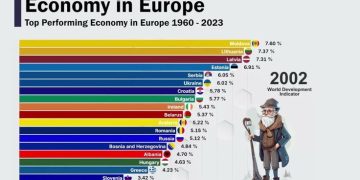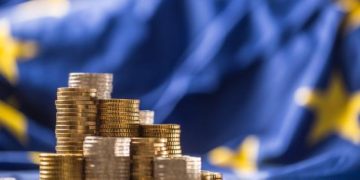Europe’s Green Transition: Financing Sustainability Amid Economic Strain
1. Introduction: A Continent at the Crossroads of Sustainability
Europe’s green transition is more than just an environmental necessity—it is an economic imperative. As the world accelerates its response to the climate crisis, the European Union (EU) has set itself ambitious goals to achieve carbon neutrality by 2050. This goal has catalyzed the EU’s Green Deal, a comprehensive economic and regulatory framework aimed at making Europe the first continent to go net-zero. The transition promises significant changes to European industries, markets, and public policy.
However, Europe’s green ambitions are being pursued in the face of substantial economic challenges. After decades of low growth, the region is struggling with sluggish productivity, high levels of sovereign debt, and slow-moving economic recovery from the COVID-19 pandemic and the energy crisis. These pressures make financing the green transition particularly complex.
This article explores how Europe is attempting to finance its green transformation amidst economic challenges. It delves into the role of public and private investment, EU green financial frameworks, the role of the European Central Bank (ECB), and the impact of climate-related fiscal policies on Europe’s future competitiveness.
2. Europe’s Green Deal: An Ambitious Vision
The European Green Deal, first introduced in 2019, is the EU’s flagship policy framework aimed at transforming the region’s economy into a green, sustainable, and carbon-neutral economy by 2050. The deal covers several ambitious goals, including:
- Net-zero greenhouse gas emissions by 2050
- Green investment of over €1 trillion by 2030
- Zero-emission transport systems, including electric vehicle infrastructure
- Circular economy initiatives to reduce waste and increase material recycling
- Carbon border adjustments to ensure European industries are not undercut by countries with less stringent environmental policies
- Increased biodiversity protection
- A Just Transition Fund to ensure that no regions are left behind, especially those dependent on fossil fuel industries
While the Green Deal is a laudable vision, its implementation is complicated by a variety of economic pressures. Europe needs to invest in new green infrastructure, clean technologies, and sustainable industries, all while addressing the ongoing challenges of sluggish growth, aging populations, and the need for fiscal consolidation.
3. The Challenge of Financing the Green Transition
3.1 The Role of Public Funding and the EU Budget
Europe’s green transition requires massive investment. According to the European Commission, an additional €260 billion annually will be needed until 2030 to meet the EU’s green transition goals. Given the scale of the required investment, public funding will play a central role.
The EU budget is a critical tool in this process. The NextGenerationEU recovery package, which was launched in response to the pandemic, allocated a significant portion of its €750 billion budget to green projects. Additionally, the EU Emissions Trading Scheme (ETS) is set to generate revenue for green initiatives through carbon pricing, though these mechanisms alone are insufficient to meet the scale of required investment.
The challenge is that many EU member states, particularly those in Southern and Eastern Europe, face high levels of public debt and budgetary constraints. While the EU’s fiscal rules, enshrined in the Stability and Growth Pact (SGP), have been relaxed to accommodate pandemic-related spending, there are growing concerns about long-term fiscal sustainability.

3.2 Leveraging Private Sector Investment
With public funds alone being insufficient, private sector investment will play an essential role. The EU has sought to attract private capital into the green economy through several initiatives:
- Green bonds: The EU’s green bond issuance program has been designed to mobilize capital for green projects. The EU has issued over €20 billion in green bonds in recent years, and this market is growing rapidly.
- Green finance taxonomy: The EU has introduced a Green Taxonomy Regulation to provide clarity on which activities can be considered sustainable. This has helped to channel private investment into sustainable projects.
- Sustainable finance disclosure regulations (SFDR): The SFDR, introduced in 2021, requires asset managers, financial advisors, and other financial market participants to disclose how they incorporate environmental, social, and governance (ESG) factors into their investment processes.
- EU Climate Bank: The European Investment Bank (EIB) has positioned itself as Europe’s climate bank, increasing its lending to green projects. In 2020, it committed to dedicating at least 50% of its lending to climate action.
While these initiatives are a step in the right direction, the overall amount of private investment in Europe’s green transition is still below the level needed to meet the EU’s carbon-neutrality target.
3.3 The Role of the European Central Bank (ECB)
The European Central Bank (ECB) plays a significant role in financing Europe’s green transition, albeit indirectly. The ECB’s monetary policies have supported green investment in several ways:
- Asset purchases: The ECB has included green bonds in its asset purchase programs. By purchasing green bonds, the ECB provides liquidity to the green bond market, which helps lower borrowing costs for issuers of green debt.
- Low interest rates: The ECB’s low interest rate policies, designed to stimulate economic activity, have also reduced the cost of financing for green projects. This makes it easier for governments, corporations, and investors to fund renewable energy projects, energy efficiency initiatives, and green infrastructure.
- Green TLTROs (Targeted Longer-Term Refinancing Operations): In response to the COVID-19 pandemic, the ECB introduced green TLTROs, which offer banks cheaper financing for lending to green projects.
While these measures have had a positive impact, there are still debates about whether the ECB’s policy stance is truly aligned with the Green Deal. Critics argue that the ECB’s focus on monetary policy and inflation targets may not be sufficient to drive the large-scale investments needed to meet the EU’s climate goals.
4. The Political Economy of Green Finance in Europe
4.1 Political Support and Regional Disparities
While the European Green Deal has wide political support, implementation faces significant political challenges. There are notable regional disparities in Europe, with some countries more committed to green transition than others. For instance:
- Northern Europe: Countries like Sweden, Denmark, and Germany have made significant strides in renewable energy and energy efficiency, but they are also facing challenges with high energy prices and the transition of existing industries.
- Southern Europe: Southern European countries, like Spain and Italy, are heavily reliant on fossil fuels and face a more difficult challenge in reducing emissions. These countries also face significant economic pressures, with high unemployment and public debt, making large green investments more challenging.
- Eastern Europe: Countries like Poland, Hungary, and the Czech Republic are highly reliant on coal and face resistance from entrenched industries and labor unions. These countries will require significant financial support from the EU to make the transition.
In the coming years, tensions are likely to arise between member states that are more committed to green goals and those that are reluctant to make the transition, especially as industries in carbon-heavy regions face competitive pressures.
4.2 Just Transition and Social Considerations
The Just Transition initiative is critical to ensuring that Europe’s green transition does not leave vulnerable populations behind. The EU has earmarked funds through the Just Transition Fund (JTF), designed to support regions and workers most impacted by the shift away from fossil fuels. This includes:
- Financial assistance for workers transitioning out of fossil fuel industries
- Investment in green jobs and sustainable infrastructure
- Retraining programs for workers in carbon-intensive sectors
The success of the Just Transition will depend on the level of political will and the ability of governments to distribute funds efficiently and effectively.
5. Challenges to Financing the Green Transition
5.1 High Costs of Transition and Economic Constraints
The scale of the green transition is enormous. In addition to the financial constraints faced by individual EU member states, the overall EU budget is limited. While the EU is seeking to increase private sector investment, much of the capital required is still beyond reach. This has led to concerns that the green transition could become too expensive to finance, especially with rising costs for raw materials, energy, and labor.
5.2 Potential Risk of Greenwashing
As the green finance sector expands, there is a growing concern about greenwashing, where companies or financial institutions misrepresent the environmental impact of their projects to attract green investment. The EU’s Green Taxonomy aims to provide clarity, but enforcement remains a challenge.
5.3 Technological and Market Uncertainty
The green transition is heavily dependent on emerging technologies such as hydrogen, energy storage, and carbon capture. While these technologies show promise, there is still significant uncertainty regarding their commercial viability. The pace of innovation and market adoption will play a critical role in determining how successful the green transition can be.
6. Conclusion: Financing Europe’s Green Future
Europe’s green transition is a monumental challenge, one that requires vast financial resources, political cohesion, and technological innovation. While the EU has made significant strides in creating the financial mechanisms to fund the transition, such as green bonds, sustainable finance regulations, and the Just Transition Fund, these efforts are insufficient on their own.
Public funding must be complemented by greater private sector involvement, and the role of the European Central Bank in supporting green finance must be carefully calibrated. However, the political economy of the green transition is complex, with regions and sectors experiencing different
































